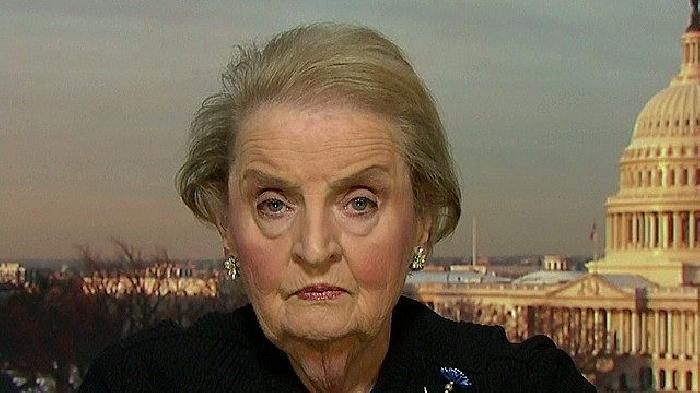Turning Point: North Korea tests advanced ballistic missile technology.

When the two met in the Oval Office soon after the 2016 election, Barack Obama reportedly told Donald Trump that the Democratic Republic of North Korea, or D.P.R.K., would be the most serious national security challenge he would face as president. After a year of provocative missile tests, fiery rhetoric and dangerous brinkmanship, Mr. Obama’s warning has proved prescient.
In 2017, nervousness approached something close to panic as North Korea’s nuclear weapons and ballistic missile programs progressed far more rapidly than experts had anticipated. In a breakthrough, Pyongyang tested an intercontinental ballistic missile capable of striking not only Guam and Hawaii, but also the continental United States. North Korea also detonated its most powerful nuclear device yet, which the regime claimed could be mounted on one of its ICBMs.
Instead of offering a clear strategy, President Trump has jumped from one approach to the next, scarcely pausing long enough for observers, including key allies such as South Korea and Japan, to catch their breath. He turned to China to rein in the D.P.R.K., a well-worn approach that, predictably, has not succeeded. He expressed an interest in negotiating directly with the North Korean leader, Kim Jong-un, saying it would be an “honor” to meet him.
Then he decided that talking was “not the answer,” even as his top aides were stating their openness to a diplomatic initiative. Along the way he has accused South Korea’s leaders of appeasement and talked about withdrawing from America’s free trade agreement with that country.
Practically nothing has been consistent about Mr. Trump’s approach to North Korea, except that he repeatedly blames his predecessors for his predicament. And while he criticizes George W. Bush and Mr. Obama for not doing more, much of his ire is directed at the Clinton administration’s diplomatic efforts, which I participated in as ambassador to the United Nations and as secretary of state.
This precipitated a crisis between Washington and Pyongyang. Our focus was on stopping the D.P.R.K. from developing nuclear weapons, so we applied pressure at the United Nations while also considering our other options, up to and including military strikes aimed at North Korea’s nuclear reactor.
Fortunately, through diplomacy, a military clash was avoided. Working closely with our allies, we vigorously engaged with North Korea to conclude an accord we called the Agreed Framework.
This required the North to shut down its reactor, seal 8,000 fuel rods containing reprocessed plutonium and freeze its plutonium production facilities, under inspection by the International Atomic Energy Agency. In return, the United States and our allies agreed to help North Korea cope with its immediate fuel shortages and pay for the construction of two civilian nuclear power plants.
The Agreed Framework was not perfect, and implementation fell short on both sides. But it ended the immediate crisis and prevented the North from realizing its potential to develop dozens of nuclear bombs. Had it not been in place, experts have estimated that the D.P.R.K. would have possessed between 50 and 100 nuclear weapons by the time the Bush administration took office. Instead, to our knowledge it had none.
To this day, I remain the highest-ranking sitting United States official to have traveled to North Korea. Kim Jong-il, the current leader’s father, and I held two days of intensive talks, during which he appeared willing to accept more significant restraints on the missile programs than we had expected.
When the Bush administration came in, it declined to continue negotiations and pursued a more confrontational strategy. By 2003, the Agreed Framework had collapsed. By 2006, North Korea had tested its first nuclear device.
Leaving office, I felt there were many possible directions in which events on the Korean Peninsula might unfold. Unfortunately, after many twists and turns, they have come full circle. The Trump administration is now facing the very specter Mr. Clinton had feared: a North Korea armed with enough nuclear bombs to threaten its neighbors — and the United States — while deterring incoming attacks.
Obviously, if this dilemma were easy to resolve, it would have been settled long ago. The fundamental problem is that the North Korean leadership is convinced it requires nuclear weapons to guarantee its own survival. For confirmation, it need only ponder the fate of Iraq’s Saddam Hussein and Libya’s Muammar el-Qaddafi.
However, the most promising way to stabilize the situation does not differ all that much from the Clinton administration’s approach. The United States’ policy toward North Korea should include diplomatic pressure, enhanced military deterrence, close coordination with South Korea and Japan, and a willingness to engage in direct talks, not as a reward to Pyongyang but as a means of doing what is necessary to protect our own security.
For too long, American policy has searched in vain for a deft, simple solution to North Korea’s nuclear ambitions. The hope has been that the regime in Pyongyang would change, or that China would force it to capitulate. The result has been a backward slide, forfeiting prior gains without substituting anything new. It is time for a more realistic and serious approach — one that exhausts the possibilities of diplomacy, protects our citizens and does not plunge the world into an unnecessary war.
The 21st Century
